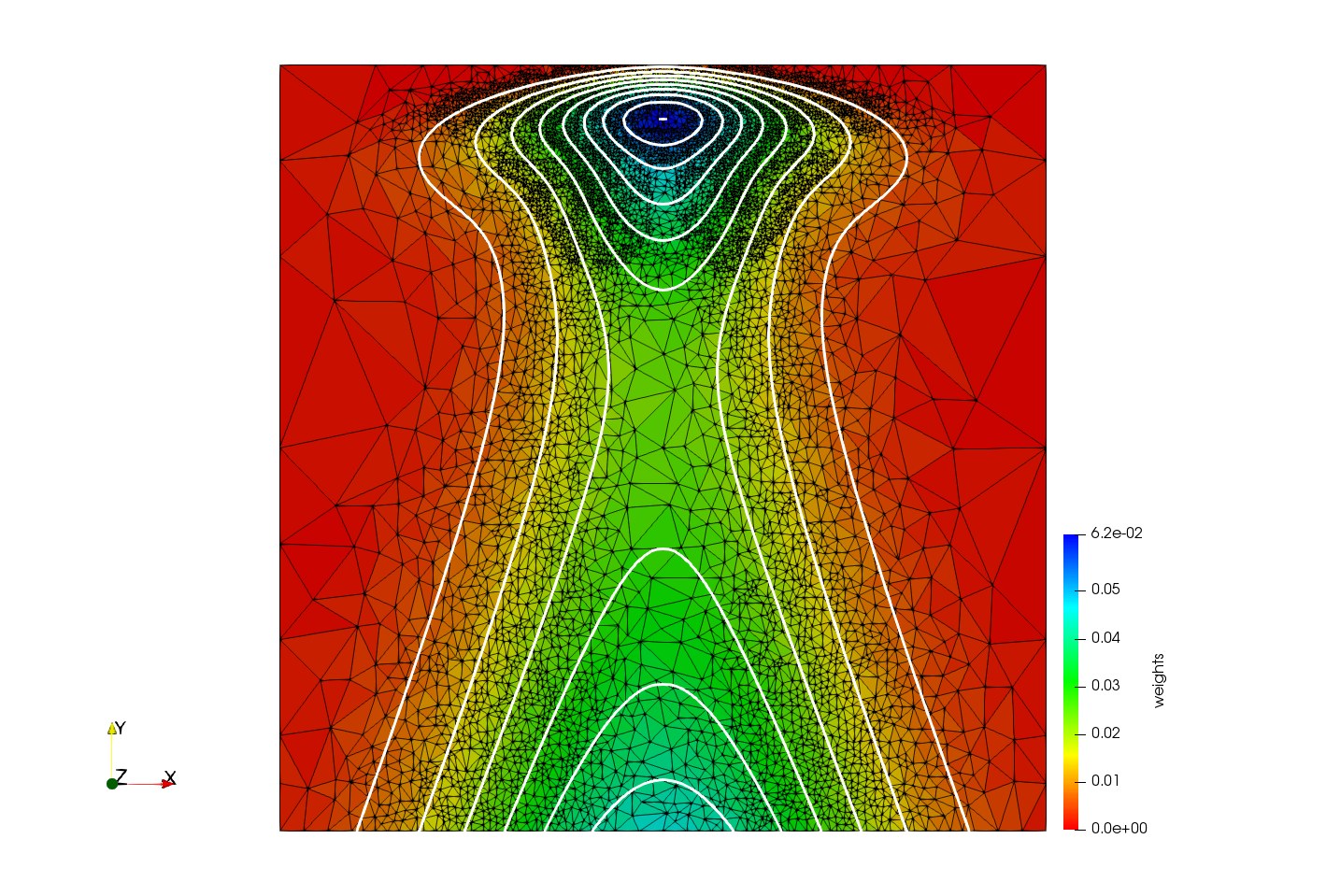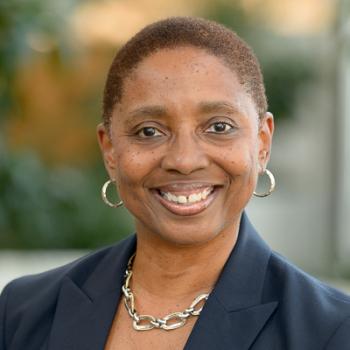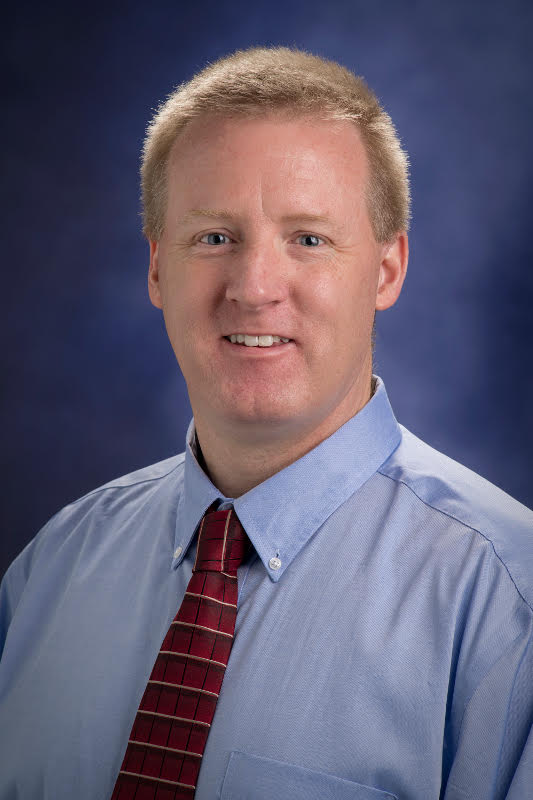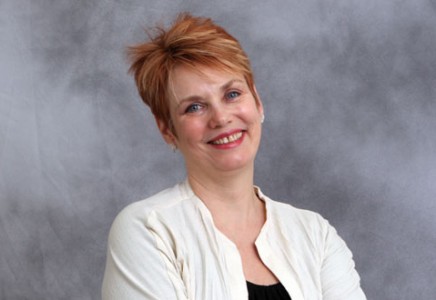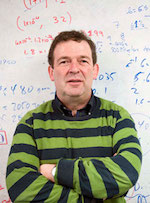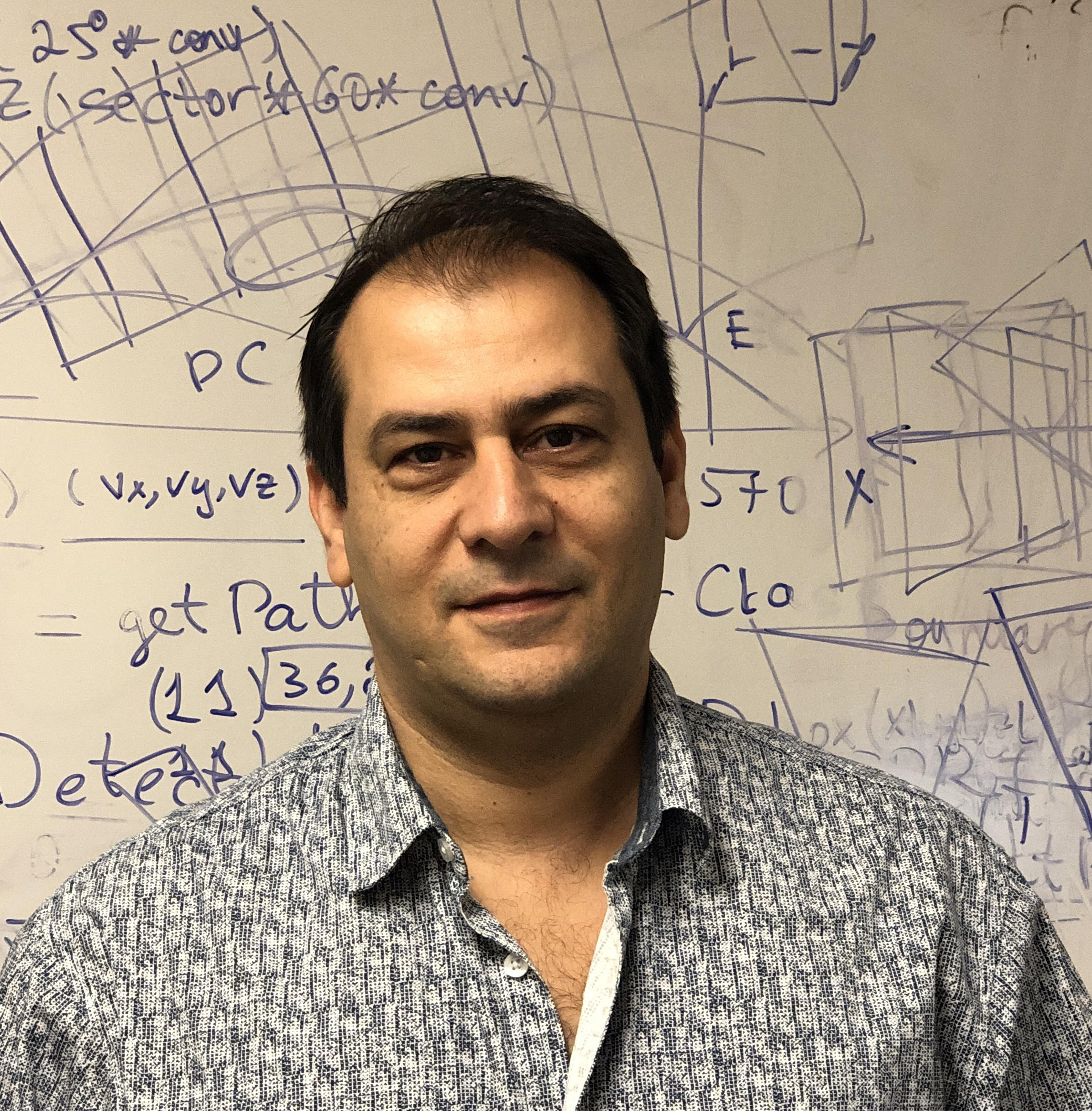CNF HPC Workshop
Contents
Overview
The Center for Nuclear Femtography (CNF) High Performance Computing (HPC) Mini-Workshop will be held at the National Institute of Aerospace (NIA): 100 Exploration Way Hampton, VA 23666 on Thursday, October 10th, 2019 from 9am-2:15pm. The Workshop is expected to be highly interactive.
Next generation HPC for processing sensor data for Imaging in Nuclear Femtography is entering one of its very early stages. The complexity from seven-dimensional data and many scales and levels of interactions between the colliding particles and what is observed create many challenges. To address these challenges the “Next-generation imaging filters and mesh-based data representation for phase-space calculations in nuclear femtography (CNF19-04)” project proposed to put together an interdisciplinary team to:
- learn lessons from medical image computing community (see Part I of HPC/Imaging mini-workshop ) and
- leverage advanced software systems from Cloud-, Edge- and Exascale-computing, with the long term aim to enable next-generation process simulations, data analyses, and physics model comparisons
Part II of the CNF series of mini-workshops is bringing together HPC leaders on software systems from ANL and VATech and Computational Fluid Dynamics, Nondestructive Evaluation, and Computational Materials from NASA/LaRC to build State- and Nation-wide bridges for leveraging Exascale- Cloud- and Edge- computing for CNF activities.
CRTC group in the Computer Science field at ODU is collaborating with two of the most advanced groups world-wide in high-performance computing: (i) Argonne National Labs, namely Mathematical and Computer Science (MCS) Division, which "provides the numerical tools and technology for solving some of our nation’s most critical scientific problems", (ii) NASA's LaRC which has a long history in high performance computing with its former Institute for Computer Applications in Science and Engineering (ICASE) and its evolution to the current National Institute for Aerospace (NIA), and (iii) many Computer Science Departments across Virginia’s Commonwealth like VATech, W&M and VCU.
The long-term goal for such activities is the development of an HPC infrastructure for efficient simulation and analysis of nuclear femtography experiments, allowing users to implement physics models, generate phase space distributions, constrain model parameters with forthcoming experimental data (fits), and share/communicate results. This mini-workshop is the first step towards achieving this goal by exploring the potential of further interdisciplinary collaborations involving in- and out-of-state experts and new computational methods.
The Figure bellow depicts preliminary capabilities for imaging CNF data ( top) using HPC tessellation technologies developed at CRTC for Medical Image Computing applications and CFD 2030 Vision (bottom).

Schedule
Thursday, October 10th:
- 9:00AM: Welcome and Introduction (Nikos)
- 9:15AM: Introduction to Center for Nuclear Femtography (David)
- 9:30AM: HPC Activities at JALB (Amber)
- 9:45AM: NASA/LaRC High Performance Computing Incubator (Cara)
- 10:00AM Other HPC activities at NASA /LaRC CM 2040 (Ed) and CFD 2030 Vision (Eric)
- 10:30AM: Optimistic Cloud & Edge Computing outside Hardware Boundaries (Dimitris)
- 11:15AM: Edge-Computing & Exascale-Era OS and computing activities at ANL (Pete)
- 12:00PM: break 15 min. (prep for lunch:$15 lunch upon request can be made available)
- Please bring $15 cash if ordering lunch. Lunch will be delivered to the workshop location and will be ordered from Jason’s Deli
- 12:15PM: CRTC HPC activities for CNF, CFD 2030 and RTS by leveraging DoE's ANL Argo OS for exascale computing (Christos/Polykarpos)
- 1:00PM: Next Generation Imaging for CNF (Gagik)
- 1:30PM Closing Remarks and Discussion (Moderator: Nikos)
- 2:15PM ANL Visitors depart for Airport.
External Visitors from ANL
Valerie Taylor
Valerie Taylor is the director of the Mathematics and Computer Science Division at Argonne National Laboratory. She received her Ph.D. in electrical engineering and computer science from the University of California, Berkeley, in 1991. She then joined the faculty in the Electrical Engineering and Computer Science Department at Northwestern University, where she was a member of the faculty for 11 years. In 2003, Valerie Taylor joined Texas A&M, where she served as head of the computer science and engineering department and senior associate dean of academic affairs in the College of Engineering and a Regents Professor and the Royce E. Wisenbaker Professor in the Department of Computer Science. Some of her research interests are high-performance computing, performance analysis and modeling, and power analysis. Currently, she is focused on the areas of performance analysis, power analysis and resiliency. Valerie Taylor is also a fellow of Institute of Electrical and Electronics Engineer (IEEE) and Association for Computing Machinery (ACM).
Pete Beckman
Pete Beckman is the co-director of the Northwestern-Argonne Institute for Science and Engineering. Dr. Beckman has a Ph.D. in computer science from Indiana University (1993) and a BA in Computer Science, Physics, and Math from Anderson University (1985). He is a recognized global expert in high-end computing systems and has designed and built software and architectures for large-scale parallel and distributed computing systems during the past 25 years. Beckman helped found Indiana University’s Extreme Computing Laboratory. He also founded the Linux cluster team at the Advanced Computing Laboratory, Los Alamos National Laboratory and a Turbolinux-sponsored research laboratory that developed the world’s first dynamic provisioning system for cloud computing and HPC clusters. Furthermore, Pete Beckman became vice president of Turbolinux's worldwide engineering efforts, managing development offices in the US, Japan, China, Korea, and Slovenia. He joined Argonne National Laboratory in 2002. As director of engineering and chief architect for the TeraGrid, he designed and deployed the world’s most powerful Grid computing system for linking production high performance computing centers for the National Science Foundation. He served as director of the Argonne Leadership Computing Facility from 2008 to 2010. He is currently a Senior Computer Scientist and Co-Director of the Northwestern Argonne Institute of Science and Engineering. Pete is also a co-founder of the International Exascale Software Project (IESP).
VA (ODU/JLAB/NASA/LaRC/VaTech)
Dimitrios Nikolopoulos
Dimitrios Nikolopoulos is a Professor of Engineering and he was recently named the John W. Hancock Professor of Engineering by the Virginia Tech Board of Visitors. He received his bachelor’s degree, master’s degree, and Ph.D. from the University of Patras. He spent the past 10 years in Europe, most recently as a professor of high performance and distributed computing and director of the Institute on Electronics, Communications, and Information Technology at Queen's University Belfast. He brings to Virginia Tech a world-class record of scholarship, teaching, service, and outreach. Through fundamental scholarship on computer systems, Nikolopoulos has made contributions to the global computing systems research community. He has published 55 peer-reviewed journal articles and 122 peer-reviewed papers in highly regarded archival conference proceedings. Nikolopoulos has advised or co-advised 22 Ph.D. students through completion and continues to advise six Ph.D. students. He has also advised 16 postdoctoral research fellows. He is a Distinguished Member of the Association for Computing Machinery (ACM) and is a recipient of a Royal Society Wolfson Research Merit Award, a National Science Foundation CAREER Award, a Department of Energy CAREER Award, and an IBM Faculty Award. See Abstract for more information about his talk at the workshop.
Eric Nielsen
Eric Nielsen is a Senior Research Scientist with the Computational AeroSciences Branch at NASA Langley Research Center in Hampton, Virginia. He received his PhD in Aerospace Engineering from Virginia Tech and has worked at Langley for the past 25 years. Dr. Nielsen specializes in the development of computational aerodynamics software for the world's most powerful computer systems. The software has been distributed to thousands of organizations around the country and supports major national research and engineering efforts at NASA, in industry, academia, the Department of Defense, and other government agencies. He has published extensively on the subject and has given presentations around the world on his work. Dr. Nielsen is a recipient of NASA's Exceptional Achievement and Exceptional Engineering Achievement Medals as well as NASA Langley's HJE Reid Award for best research publication.
Cara Leckey
Dr. Cara Leckey currently leads the NASA Langley High Performance Computing Incubator Project and serves as the Assistant Branch Head in the Nondestructive Evaluation Sciences Branch. Since joining NASA in 2010, her research has focused on computational nondestructive evaluation. She also serves as an Associate Technical Editor for the journals Materials Evaluation and Research in NDE. Cara received her Ph.D. in physics from the College of William and Mary in 2011.
Amber Boehnlein
Amber Boehnlein is Jefferson Lab’s Chief Information Officer, responsible for the lab’s Information Technology Division, and the lab’s IT systems, including scientific data analysis, high-performance computing, IT infrastructure and cyber security. She completed her Bachelor of Science degree in Physics in 1984 at Miami University followed by a Doctorate in Physics in 1990 at Florida State University. Boehnlein arrived at Jefferson Lab in June 2015 with extensive knowledge, skills and experience from her years at SLAC National Accelerator Laboratory, a Department of Energy appointment, and Fermi National Accelerator Laboratory. She led the Computing Division at SLAC ,from 2011 until accepting her current assignment, where she gained expertise in computational physics relevant to light sources and large scale databases for astrophysics, as well as overseeing the hardware computing systems for the High-Energy Physics (HEP) program. Boehnlein has a particular interest in issues concerning the management and use of research data. She serves on national and international advisory boards in areas related to research computing and particle physics.
David Richards
Dr. David Richards is Theoretical and Computational Physics at DOE's Jefferson Lab. Richards came to Jefferson Lab as a staff scientist and joint faculty member at Old Dominion University in 1999. He became a full-time staff scientist in 2002 and served as acting Theory Center leader from September 2009 through October 2010. He was appointed deputy director of the Theory Center in mid-October 2010. Richards' current research focus is aimed at garnering a better understanding of so-called "excited states." These are subatomic particles that were once the familiar protons and neutrons, but now have additional energy. The experimental determination of their masses and properties is an important effort at Jefferson Lab. Richards and his colleagues use supercomputers at Oak Ridge National Lab, and the high-performance GPU-enabled (graphics processing unit) clusters at Jefferson Lab, to compute the masses and properties of these excited states from first principles, using lattice QCD. Comparing these calculations with experimental data provides crucial insights into the nature of matter and how the masses of so-called hadronic matter, such as protons and neutrons, arise from QCD. A particularly exciting recent calculation is that of the masses of so-called "exotic mesons," mesons that cannot be constructed from straightforward excitations of a quark and an antiquark, the fundamental building blocks of QCD. The search for such mesons is the aim of the GlueX experiment with CEBAF at 12 GeV. Richards and his colleagues predict that there will be exotic mesons at a mass that will be accessible to GlueX, underpinning the scientific imperative for the experiment. Throughout his career, Richards has received numerous awards, including scholarships at Cambridge and an advanced Fellowship at Edinburgh. He serves on committees such as the Lattice QCD Executive Committee and was the co-organizer of Lattice 2008, the 26th International Symposium on Lattice Field Theory held in Williamsburg, and a panel convener for Forefront Questions in Nuclear Science and the Role of High Performance Computing, held in 2009 in Washington, D.C.
Gagik Gavalian
Dr. Gagik Gavalian is a Staff Scientist at Jefferson Lab and Assistant Professor at Old Dominion University. He attended Yerevan State University and graduated in 1996 with a major in Physics. He obtained his Ph.D. in Nuclear Physics from the University of New Hampshire in May 2004. Gagik then served as a Post Doctoral Research Associate at Old Dominion University until 2008. He then assumed the role of Assistant Professor at Old Dominion until 2014, where he taught introductory physics and conducted research at Jefferson Lab. Gagik played an instrumental role in the Hall B data mining efforts leading to multiple publications on studies of nuclear effects in electron-nucleus scattering. Gagik joined Jefferson Lab as a staff scientist in 2014 and has been working on preparing the CLAS12 data analysis packages towards expedient analysis. He also mentors Doctoral candidates and college students. For past four years Gagik worked on implementing CLAS12 detector reconstruction packages in cloud distributed CLARA framework. CLAS12 detector was successfully commissioned in February 2017 with reconstruction software successfully tested for full data production. For the past (2017-2018) year Gagik was leading effort in development of physics analysis software for CLAS12 experimental data.



